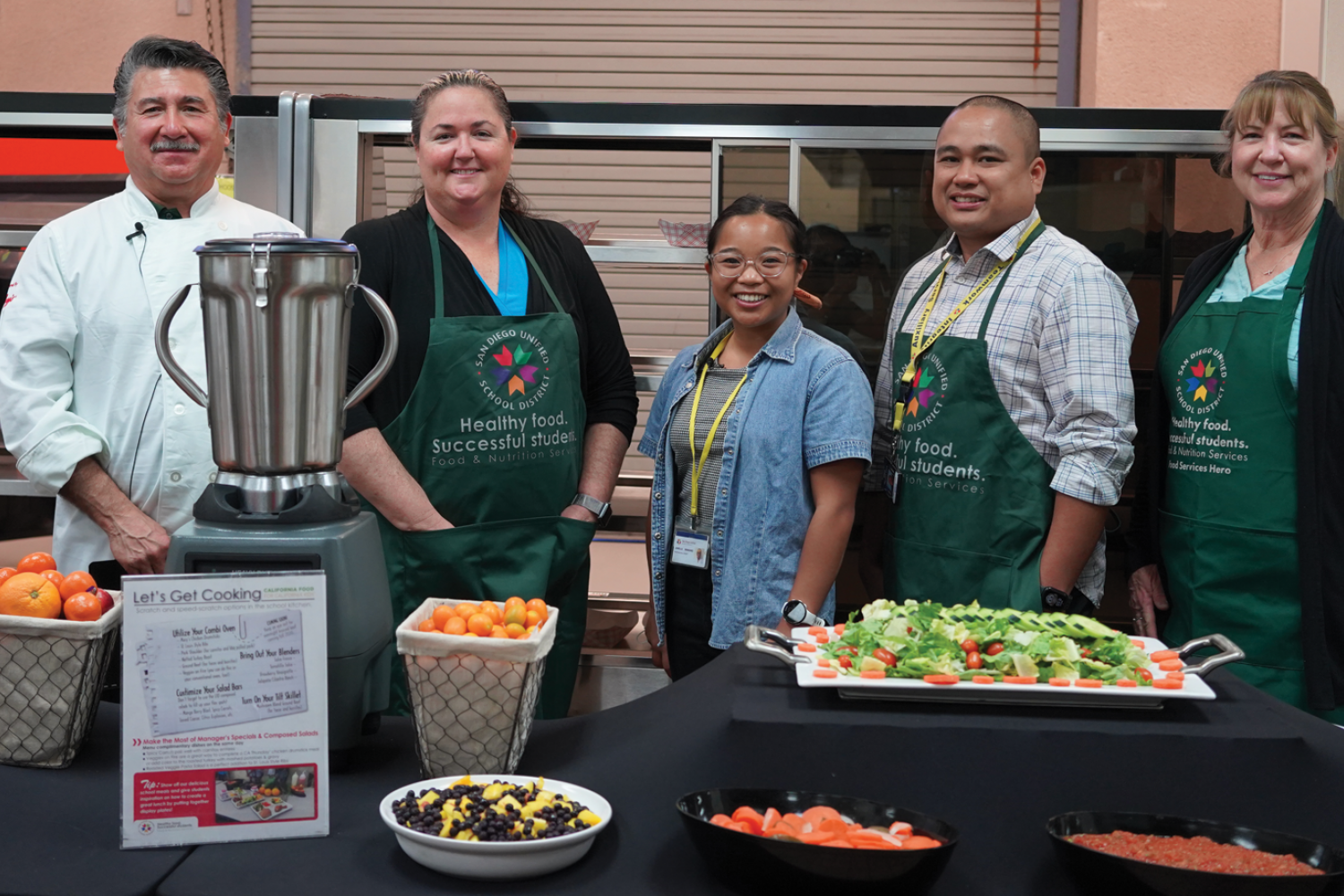
As school districts move to make more shifts towards plant-forward recipes, the Center for Ecoliteracy has put out Success with Plant-Forward Meals, a new publication with ideas and resources for engaging students. Among other strategies, student voice and choice invites student feedback, ideas, and suggestions to illuminate improvements that can make plant-forward meals a success. The best part is that meaningfully engaged students have proven to have a positive impact on meal participation.
To support with student engagement, there is a collection of plant-forward flavors posters featuring popular California-grown crops with nutrition information, history about their origins, and their importance to California agriculture. There is also a taste test poster that allows students to use stickers to share how they feel about new recipes or food samples.
Our team got to go out in the field this spring and conduct some of our first site visits since the start of the pandemic. We visited with school nutrition teams at San Diego Unified School District (pictured above) and San Luis Coastal Unified School District to demo and then conduct plant-forward student taste tests with these new resources. Here are a few key elements to consider when planning a student taste test:
- Presentation matters. The way you present and market the food plays a huge role in acceptance. It’s important to set up a welcoming table and include someone who the kids already know.
- Celebrate where food comes from. Be sure to tell students about the farm and the producers where you sourced ingredients. Consider ways to bring farmers to school sites, if possible, and remind the students of the growing regions near them.
- Trust the input. Kids are very honest and will let you know if they don’t like something or think it could be improved. When San Diego Unified School District sampled their “Veggies on Fire” side dish, students wanted it to be spicier because of the name.
- Students want to be heard. Engage in conversation and ask whether they like the item and if they would like to see it on the regular school lunch menu. Students should feel heard and encouraged to share their ideas. Staff are more likely to support a menu change that’s already been vetted with their students — the students will be happy and they won’t have to throw food away.
“VEGGIES ON FIRE” IN SAN DIEGO
The first student taste test was at San Diego Unified School District in March 2022 in collaboration with Fred Espinosa, their Food Service Director, and his team, including Janelle Manzano, Farm to School Specialist; Chef Juan Zamorano, Culinary Skills Specialist who oversees recipe development and culinary training; and Mary Tyranski, their registered dietician. The team set up a sampling table and taste test survey poster at Wilson Middle School during the lunch period and invited students to try their “Veggies on Fire” side dish (featured on page 14 of our Plant-Forward Cooking Students Love). This student-approved dish qualifies towards a half cup vegetable component of a reimbursable lunch and is a mixture of corn, bell peppers, mushroom, and broccoli. More than 300 students — and even a few teachers — tried the samples and the majority LOVED it and were eager to see it on the lunch menu in the near future.
“It’s so exciting to be able to offer our students this option of a cooked vegetable recipe for lunch,” said Manzano. “We’ve done salad bars for years — which traditionally offers raw produce. But having this “Veggies on Fire” dish of roasted veggies shows students there are different cooking methods to taste and explore! I think it’s one of the best next steps for our café program to move in this direction!”
HUMMUS SAMPLER IN SAN LUIS COASTAL
In May, our team went to Laguna Middle School in San Luis Coastal Unified School District. “It was super fun,” said Krysta Williams, Program Manager for our California Food for California Kids® initiative. “We did a taste test with a variety of freshly-prepared hummus: roasted red pepper and a black bean chocolate hummus that were served in cute snack boxes and came with local carrots, snap peas, celery, bell peppers, and strawberries. The kids were super excited.” During the first lunch period, they ran out of boxes. The most popular was the black bean chocolate hummus though the kids were enthusiastic to try the other ones as well and after the taste test most agreed that they wanted them all on the menu regularly.
Part of the robust engagement with students is to connect what's happening in gardens and local farms with the cafeteria and discuss it in the classroom. This summer, San Luis Coastal Unified School District, led by Erin Primer, their Food Service Director, will pilot more plant-forward recipes during a summer culinary program for K–8 students.
PLANT-FORWARD RESOURCES
The Center for Ecoliteracy has a full suite of plant-forward resources complete with recipes, culinary techniques, and student engagement materials for success in crafting plant-forward school meals for students. We provide technical assistance with menu planning and local procurement to support school districts with their plant-forward school meal goals. Check out the resources.
